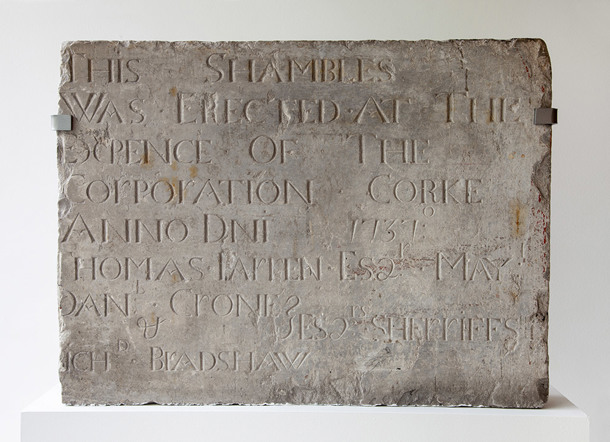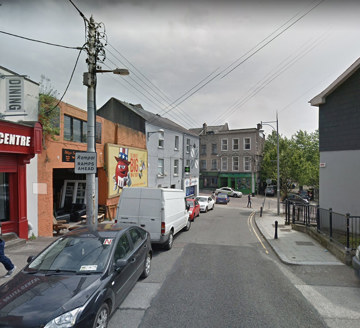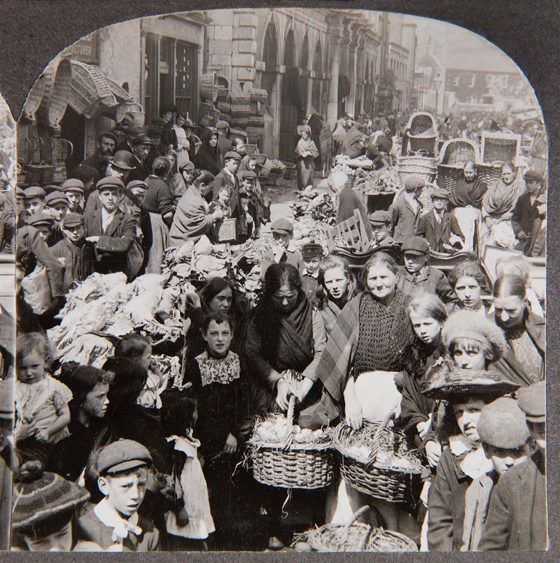Shambles Stone
This stone plaque was located at the entrance to the north shambles
The word ‘Shambles’ comes from the old English, German and Latin words being ‘sceamel’ ‘schemel’ and ‘scamellum’. All meaning the same word, ‘stool’ or ‘bench’. Over time the word ‘shamble’ changed its meaning from ‘a table or stall that had meat or fish on display’ to the plural being used to describe ‘a market with stalls of meat and fish’.
This stone has an inscription that reads, “This Shambles was erected at the expense of the Corporation Corke”, “Anno Dni 1737 Thomas Farren Esq., Mayor, Dan Crone Esq., and Richard Bradshaw Esq., Sheriffs”. All the men mentioned in the inscription were Freemen of the city. The ‘shambles’ mentioned on this stone was originally located at the junction of Shandon and Blarney Streets in an area known as Broguemakers Hill. In 1788, the English Shambles (now the English Market) was opened and the Irish Shambles, which was located on the Coal Quay, was opened in the mid-19th century.
A photograph of Broguemakers Hill at the bottom of Blarney Street, where the shambles were located
These Shambles brought several key benefits to Cork. They generated income for the city’s Corporation through the rent collected from those who had stalls in the markets. They brought regulation and improved public hygiene as they moved the slaughtering of animals off the streets and into these designated places. In effect, they separated the slaughtering from the retail aspects of the trade. However, one French visitor to Cork in 1796/97, De Latocnaye, noted that the city authorities should not ‘permit the inhabitants to allow their pigs to roam wherever they may seek pasture, and don’t let these pigs be seen after their throats have been cut’.
Throughout the 18th and 19th centuries, several markets were established in the city including the ‘English’ Market (1788) and the ‘Irish’ Market (1840) to serve the consumer needs of the city’s population. The above photograph shows St. Peter’s Market (on the left-hand side) and a very crowded Coal Quay in about 1900.
During the 18th century, the provisions trade grew in Cork helping to improve the city’s economic prosperity. Increased trade with the West Indies and the British Navy meant the city’s provision merchants were slaughtering high quantities of meat annually. Cork visitor John Carr, referred to about 100,000 heads of black cattle being killed each year and De Latocnaye mentioned that one merchant he met had killed between 20-25,000 pigs for the same period, making him the ‘greatest murderer of hogs’ he ever knew.



